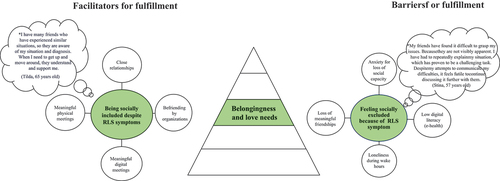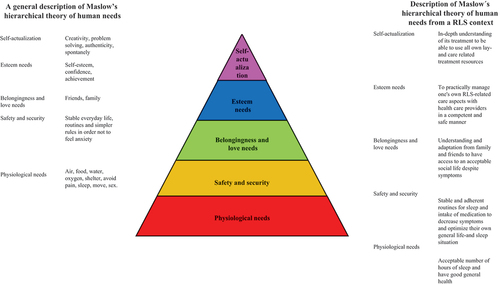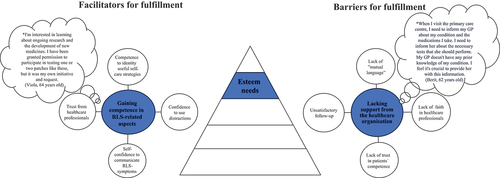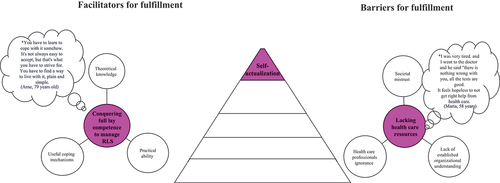Figures & data
Table I. Diagnostic criteria established by the international restless legs syndrome study group (2014).
Table II. Socio-demographic and situational data of the patients with RLS (N = 28).
Table III. Examples of questions from the semi-structured interview guide.
Figure 2. Illustration of facilitators and barriers based on Maslow’s physiological needs as described by people living with rest legs syndrome (N = 28).
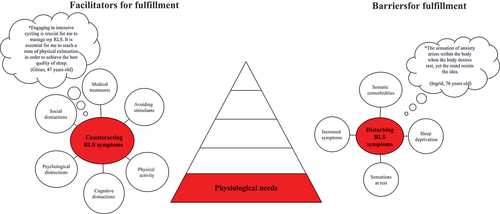
Figure 3. Illustration of facilitators and barriers based on Maslow’s safety and security needs as described by people living with rest legs syndrome (N = 28).

Figure 4. Illustration of facilitators and barriers based on Maslow’s belongingness and love needs as described by people living with rest legs syndrome (N = 28).
